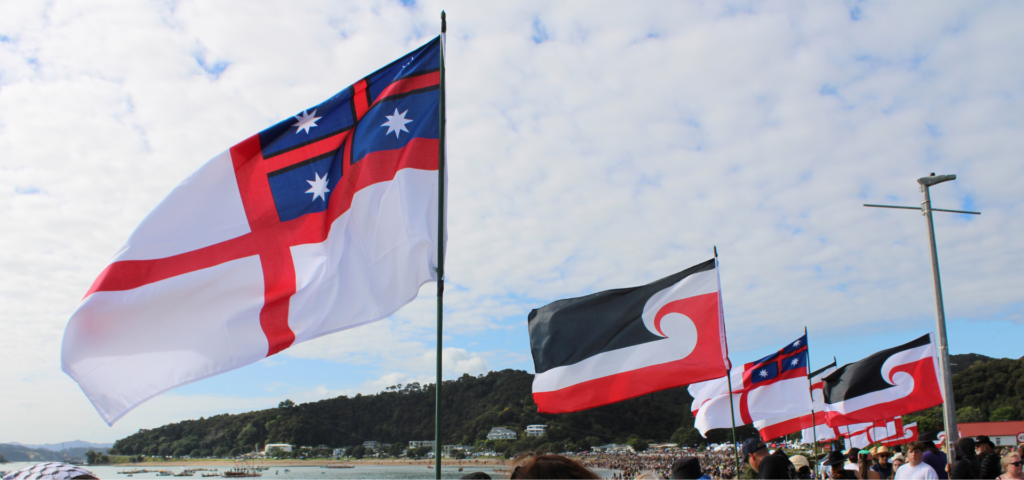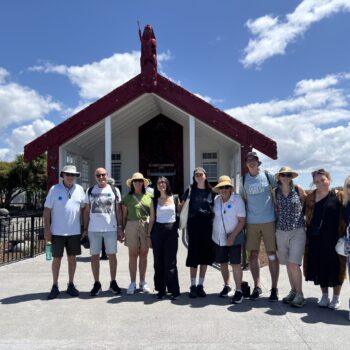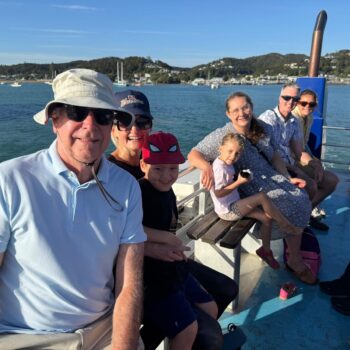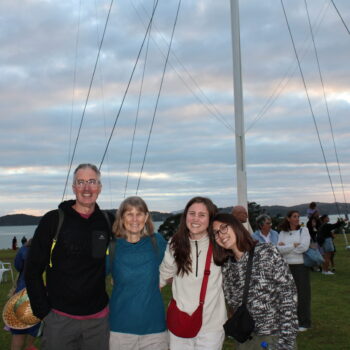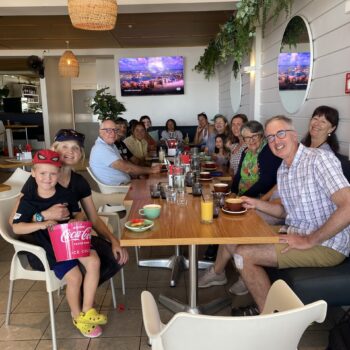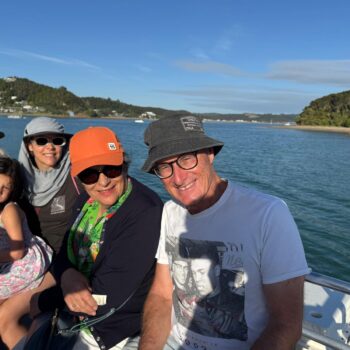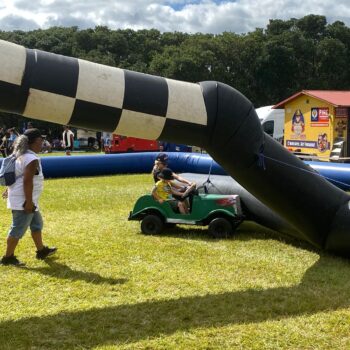REFLECTIONS FROM WAITANGI
KOTAHITANGA AND OUR COMMITMENT TO TE TIRITI
An early morning together
Thursday February 6th, 2025 marked the 185th anniversary of the signing of Te Tiriti o Waitangi. For the second year, trustees and staff of The Tindall Foundation journeyed north to commemorate Aotearoa’s national day together, reaffirming our collective commitment to Te Tiriti as a philanthropic family foundation in New Zealand.
Alarms set for 3.30am, we made our way to the upper Treaty grounds before dawn to attend the formal service at 5am. Iwi leaders, dignitaries, political members and whānau gathered in the hundreds to Te Whare Rūnanga Marae and the grounds, overlooking Te Moana Pikopiko-i-Whiti, the inner bay of islands. Together, we remembered the promises that were made 185 years ago and the work that is still required to fulfil them today.
The ceremony was opened by Pita Tipene, chairman of the Waitangi National Trust, followed by a series of speakers who reflected on the past year and our wider history.
A particularly strong message was from Te Aroha Rountree, President of the Methodist Church of Aotearoa New Zealand that woke the crowd up in cheers and laughter as she likened the recent Treaty Principles Bill to negotiating a divorce with only one spouse (the crown) actually aware of these negotiations…
We recently submitted our opposition to this bill and recommend it is abandoned completely.
Read our full submission here
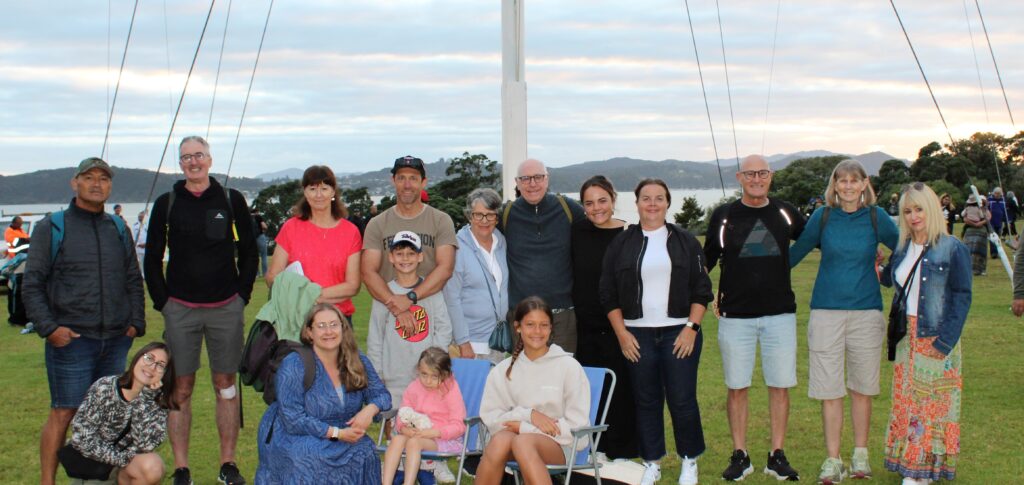
We are on a continuous journey of learning, both as individuals and as a foundation. Te Ao Māori knowledge and aspirations continue to help shape the work we do and the initiatives we support. This experience further built on our organisation’s understanding of mātauranga Māori, our comfort engaging in tikanga Māori and te reo Māori while also helping to enrich our relationships with our Māori communities.
“We left Waitangi with an even greater sense of responsibility as a foundation—to listen, learn, and work together. Through collaboration with Māori, we think we can make a real difference for communities and for Aotearoa.”
Stephen Tindall, Co-Founder, The Tindall Foundation
There was a common theme once again shared and felt throughout the programme, from Tangata Whenua, Tangata Tiriti, first-time attendees or those who come each year – kotahitanga (oneness).

A colourful celebration that every New Zealander should experience at least once
As the sun rose, the ceremony ended, and festivities commenced. One of the big highlights of the day was the waka ceremony, led by Ngātokimatawhaorua, representing the ancestorial waka that came by these waters. As the paddlers reached the beach in front of the newly refurbished Te Tii Marae, they stood in formation, a karakia began and a powerful mass haka followed, sending chills through the crowd.
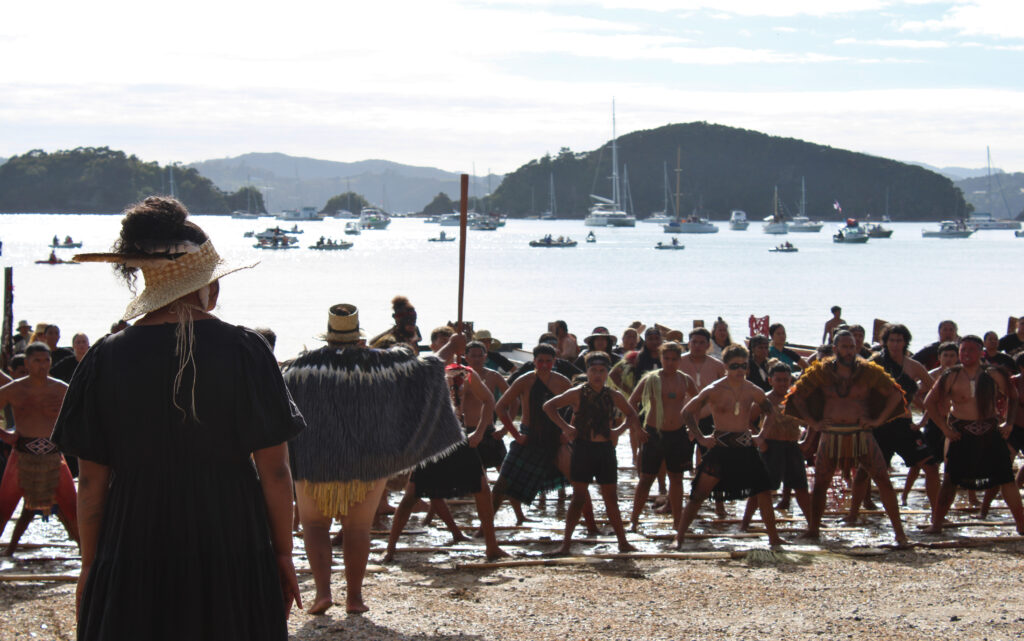
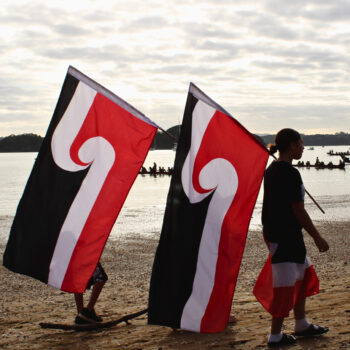
Among the tens of thousands of attendees, we saw tau-iwi stand as allies, defending Te Tiriti, both in solidarity with Māori and themselves as tangata Tiriti.
Walking through the festival grounds, the overwhelming sense of pride was tangible. The hums of “Proud to be Māori” sung, Tino Rangatiratanga flags flying and shirts worn boldly. A feeling best summed up by a rangatahi beside us during Ngātoki and the haka:
“It’s cool to be Māori, ay?”
This day is more than just a historical remembrance day; it is a living expression of identity. At the festival, te reo flows freely and a sense that Māori are more united than ever in our support for, and defense of, Te Tiriti.
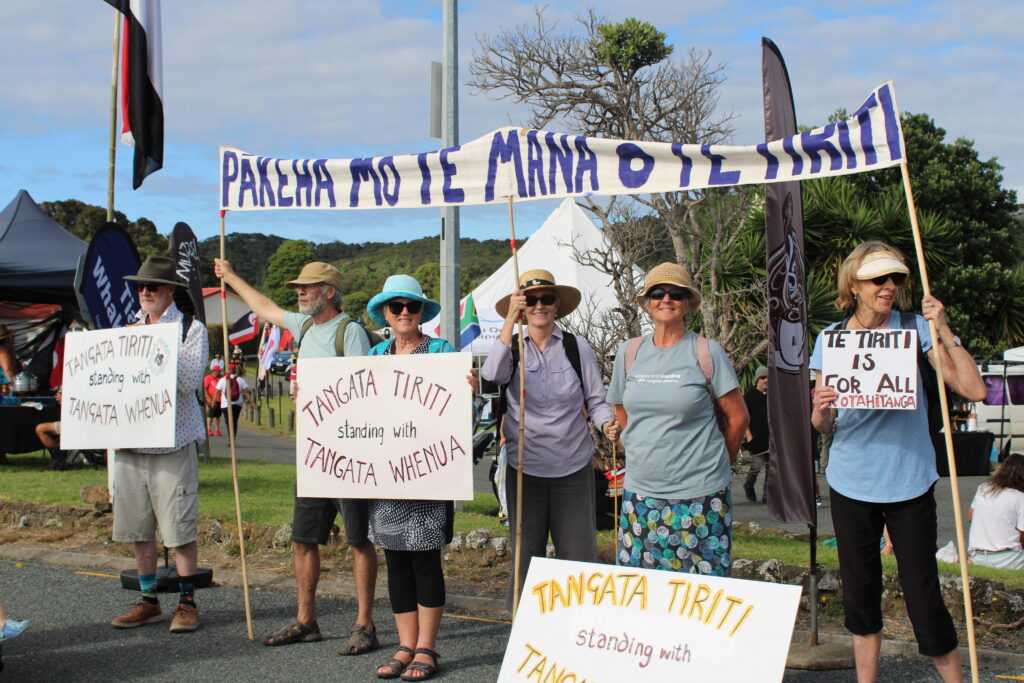
“At the heart of it all, we saw the power of whānau interconnectedness, our hapū-centred and tribal ways of being, and the strength that comes from belonging. When we are together, we are well.”
Cyril Howard, Regional Development & Donations Manager, The Tindall Foundation.
It was a day we were grateful to experience together, and for many of us, one we hope to attend again in the future. The rest of the afternoon was spent wandering the stalls to check out whānau enterprise, catch up with the organisations we work with and visit the social services tents on site.
There was incredible kai from local vendors, including hāngī, whitebait fritters, pāua pies, and a crowd favourite among our group—watermelon and ice cream. We were gifted with things to see and do all afternoon, including kapahaka performances with many of the rōpū preparing to compete at Te Matatini in Taranaki later this month.
Scroll through the photos below:
FURTHER REFLECTIONS FROM OUR TTF TEAM
“Our time at Waitangi has strengthened our resolve: to stand alongside Māori in shaping the future of Aotearoa together.”
“We witnessed social cohesion in action, seeing what true partnership and shared aspirations could look like.”
“Waitangi has changed over the past 20 to 30 years. Once a place with heavy police presence and violent suppression of protest, today it is a place of celebration, learning, and shared visions. The way Waitangi Day is often portrayed in the media also does not reflect what we experienced – particularly for our first-time attendees, they felt safe relaxed and inspired.”
“The energy felt there was a force that has grown stronger over generations.”
“Attending the National Hui ā-Motu in early 2024 and the tangihanga of our Māori King reinforced our responsibility —to deepen our relationships, show up, and encourage other philanthropic funders to contribute meaningfully to Māori aspirations.”
“We saw intersectional support—whānau standing for pride, environmental protection, and collective well-being.”
“As a mainstream organisation attending Waitangi, it felt like another step in breaking barriers—being present in Māori spaces, learning, and standing in solidarity. It was heartening to hear, ‘It’s so cool you guys are all here’—a reflection of the value of showing up, engaging authentically, and being part of the movement toward a more equitable Aotearoa.”
“This experience reinforced the importance of supporting Māori leadership, aspirations, and self-determination— and the things that underpin their wellbeing without reliance on government structures. Nation-building means strengthening Māori-led initiatives, fostering shared understanding, and ensuring future generations inherit an Aotearoa grounded in kotahitanga, manaakitanga, and tino rangatiratanga. By Māori, for Māori, for all.“
